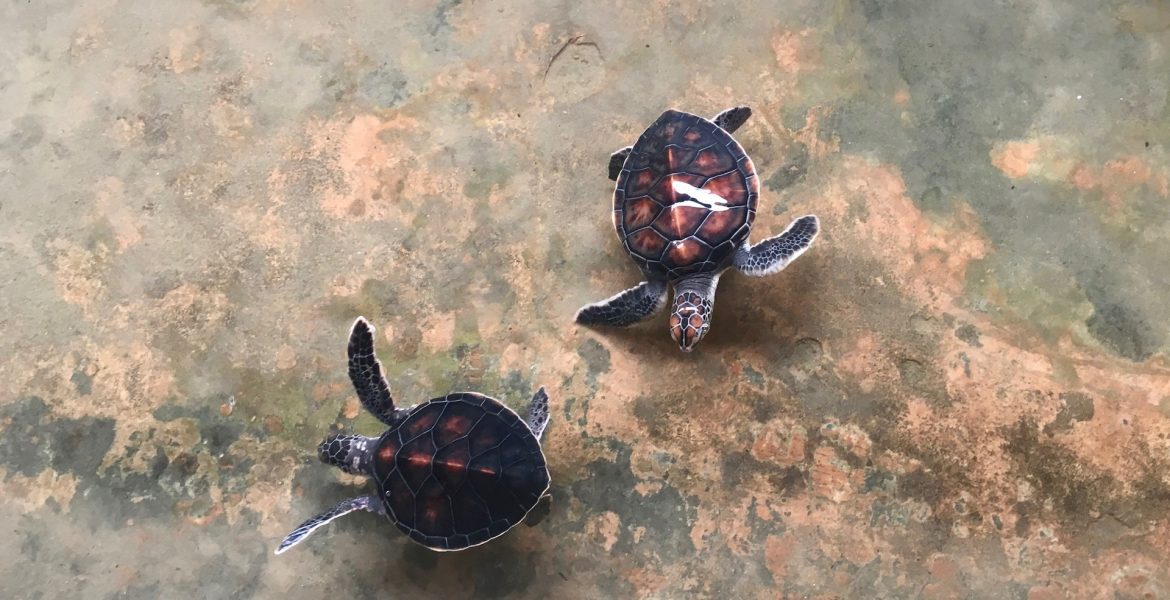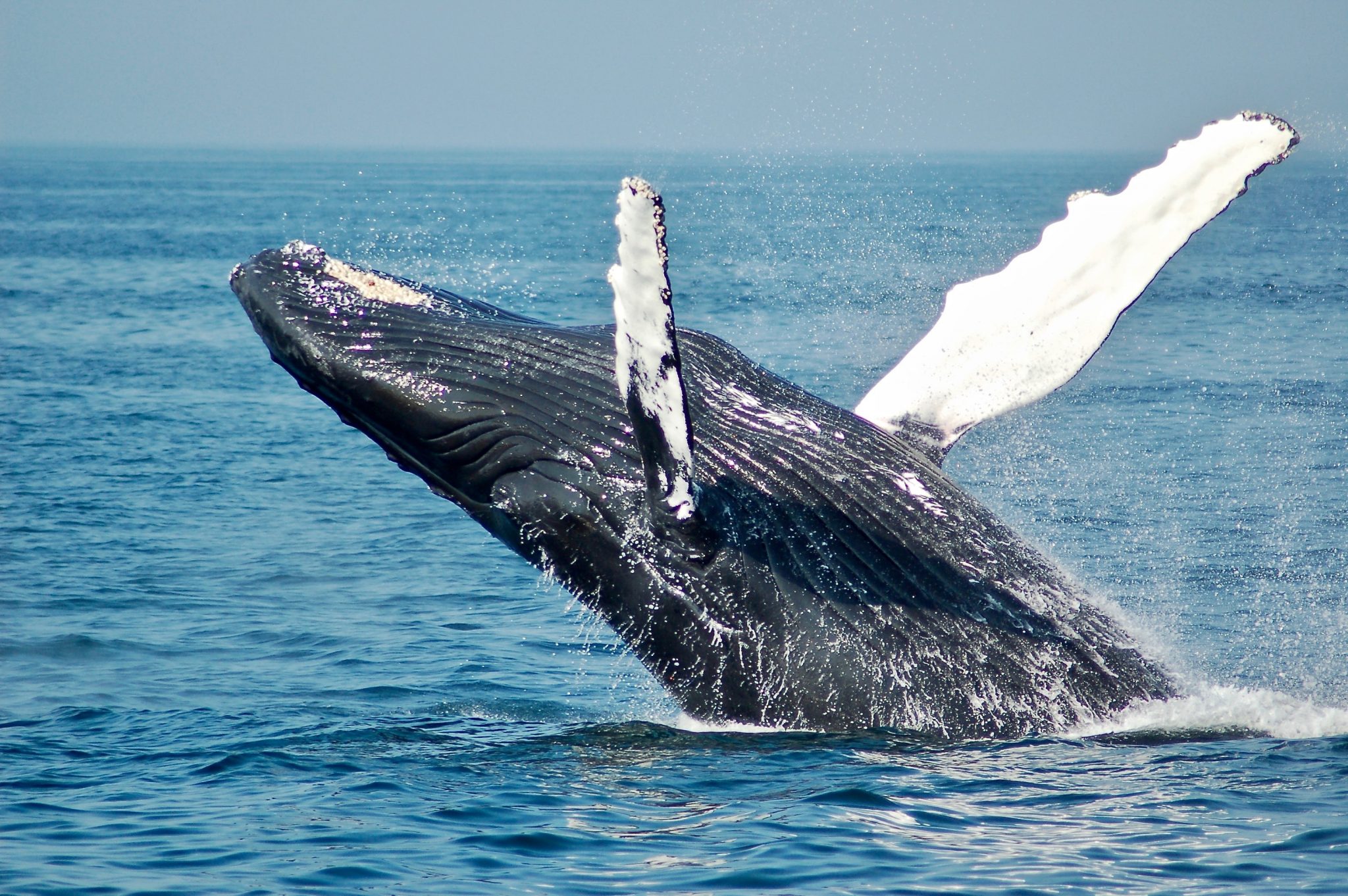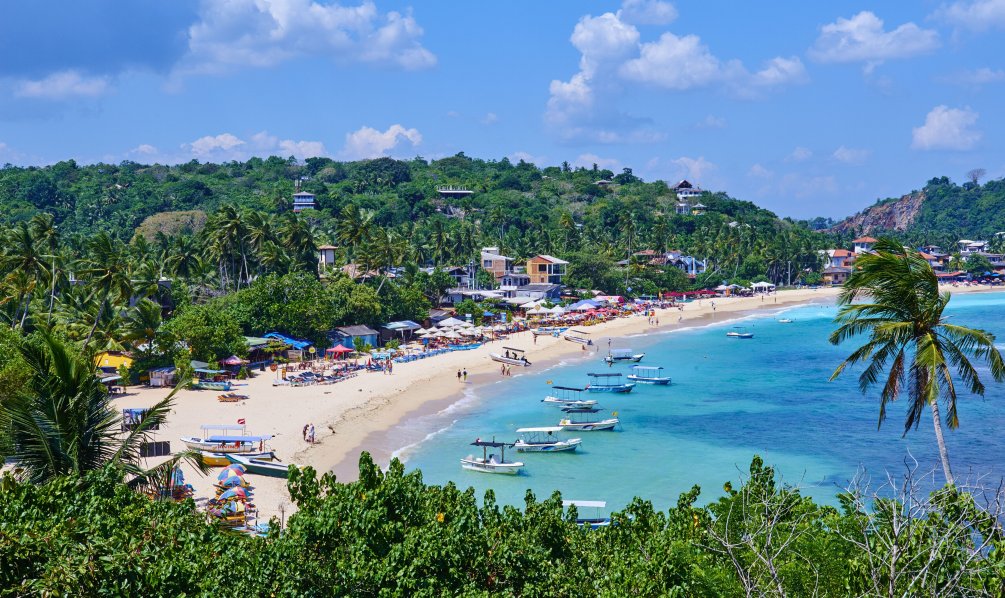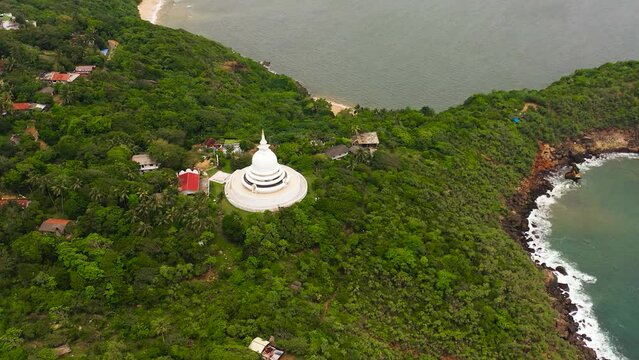Sri Lanka shelters a good count of endangered species across the globe, and one of the most exciting species amongst them is the sea turtle. The hatcheries along Sri Lanka’s western coast regularly witnesses a good count of sea turtles. Swimming all their way through the mighty Indian Ocean, the Sea Turtles reach hatcheries during their hatching period. To protect these frequent Galle sea coast visitors, the Galle Sea Turtle Hatchery of Sri Lanka was established around 40 years ago.
This hatchery in Galle has outer walls covered with themed murals portraying vibrantly coloured turtles. Inside, you will find a series of turtle preservation tanks. Every tank is accompanied with a precautionary sign board for visitors. The tourists visiting the hatchery are regularly guided through a live demonstration of depicting the entire life-cycle of sea turtles and their conservation period. The place functions as daycare for all those newborn sea turtles who opened their eyes here for the very first time. The hatchery homes to several small water tanks for protecting these newly born sea turtles.
Gradually, five different varieties of Sea Turtles are found here at the Sea Turtle Hatchery in Sri Lanka – Olive Ridley, Green Turtle, Hawksbill Turtle, Loggerhead Turtle, and Leatherhead Turtle. All the injured sea turtles are protected within a separate tank, which is specially reserved for their protection. Every member working here at the Galle Sea Turtle Hatchery is trained with the basics of helping all the sea turtles who are in thorough need of medical assistance or all those who are pregnant.
What Not To Miss

The hippy attitude of the Hikkaduwa is popular amongst all its travelers as there is much more to do beyond visiting the Sea Turtle Hatchery there. Let’s simplify your Hikkaduwa visit with these bang on tourist spots –
1. Hikkaduwa Beach – The moment you feel depressed on your tour to Hikkaduwa, put on your beachwear, and get yourself to the Hikkaduwa Beach. And guess what? You can spend an entire day here as the beach is known for some fabulous water sports like snorkeling and surfing.
2. Seenimgama Vihara – This fascinating location is situated so deep within the waters like an island, that you need to be prepared mentally for a ferry ride to get you off the shore.
3. Hikkaduwa Lake – A very famous attraction of the Hikkaduwa is a lake wherein you can spot some local birds and other endemic species. The principal attraction of this Hikkaduwa Lake is the fact that it is a breeding site for the monitor lizards.
4. Coral Gardens – Not known to many, the Hikkaduwa is also a site to a magnificent coral garden. A visit here will introduce you to more than 70 different species of the corals here.
5. Gangaramaya Temple – To stay in touch with your early morning prayers, do take some efforts to visit the Gangaramaya Temple. This beauty of Hikkaduwa is known for its traditional educational paintings and its impressive architecture.
6. Madu Ganga – Flowing calmly adjacent to the village of Balapitiya, the Madu Ganga river offers a tranquil setting for all their visitors. There are hundreds of mangroves, islets, and aquatic birds that amplify the beauty of this pristine natural setting.
How To Reach
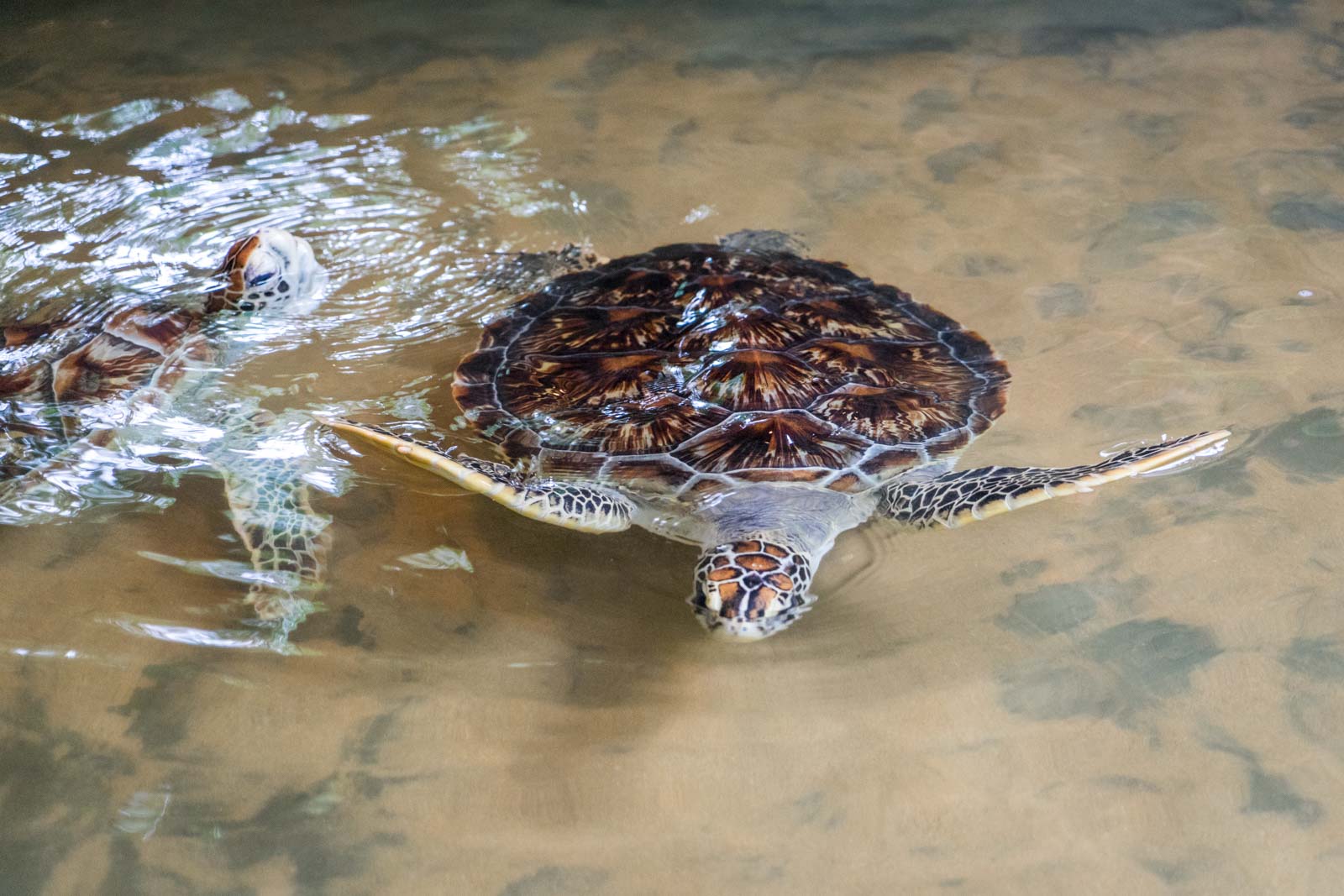
The Galle Sea Turtle Hatchery is situated at a distance of 16.2 km from the Galle Airport of Sri Lanka. A transport in a self-hired cab is the best way to get to your final destination within 32 minutes.
You first need to head southwest in the direction of Kahathuduwa Temple Road and then take a left to Colombo-Galle-Hambantota. From the Central Finance Company, take a slight left, and once you reach the roundabout, go for the second exit onto the Colombo-Galle-Hambantota Road.
Best Time To Visit
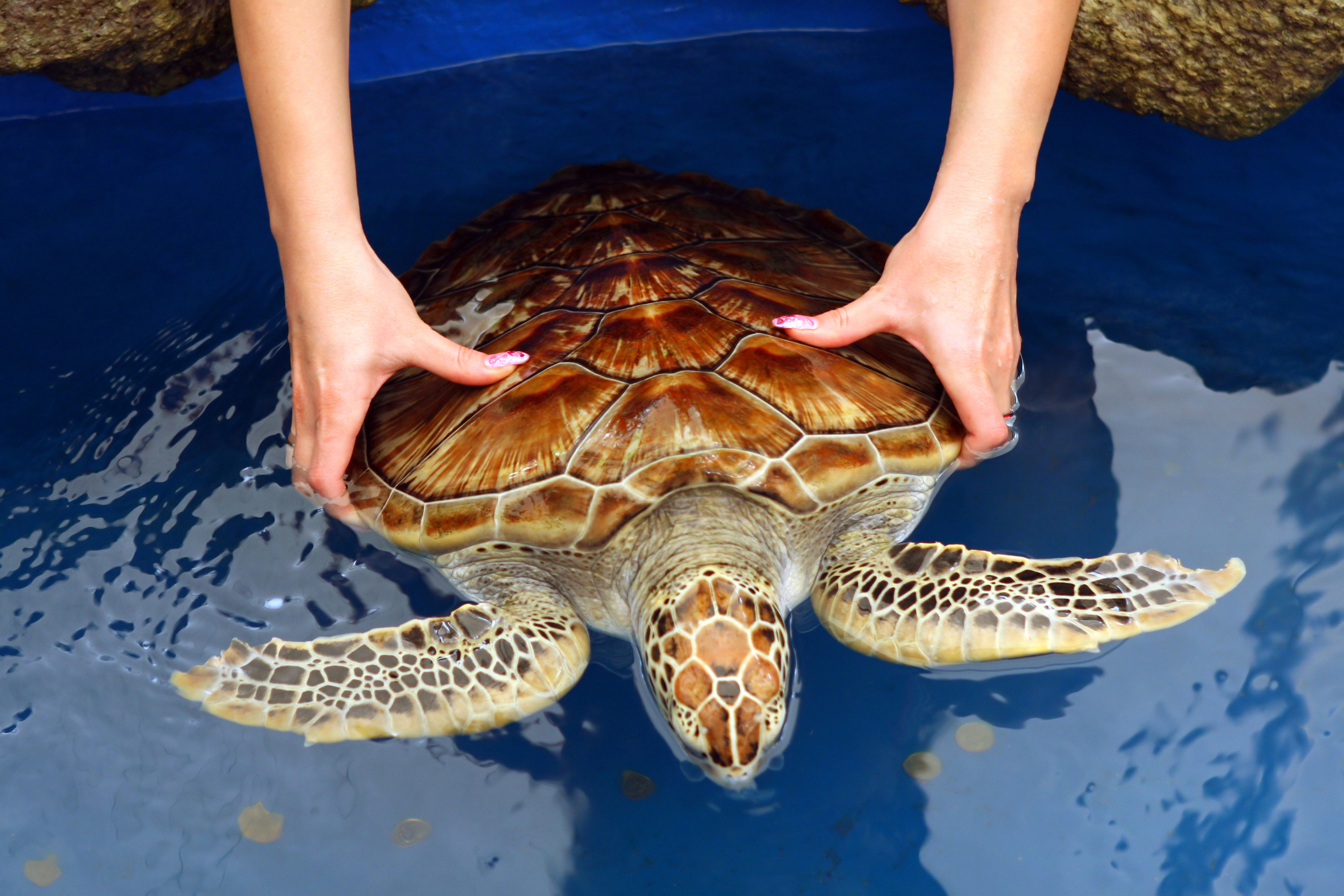
The best time to visit any Sea Turtle Hatchery is during the period when the female sea turtles return to their nesting spot to lay off their eggs. This is the only time when these sea turtles are in their trance-like state and won’t be much afraid with the sight of onlookers.
Essential Information
Location – Colombo – Galle Main Rd, Galle, Sri Lanka.
Entry Fee – 500 Sri Lankan Rupees or 2.83 USD
Timings – The Sea Turtle Hatchery at Galle remains functional on all days of the week between 08:00 am in the morning until 06:00 pm in the evening.
Reasons for the Demise of Sea Turtles
 According to the World Conservation Union, there are five main underlying reasons for the unexpected demise of the sea turtles –
According to the World Conservation Union, there are five main underlying reasons for the unexpected demise of the sea turtles –
1. The fisheries present across the globe are the reasons why the sea turtle hatcheries are being adversely affected. The consequence of the presence of such fisheries at the hatching sites of these sea turtles has to lead to their death due to entanglement, destruction of their habitat, and sudden changes in their food web.
2. It is a common scenario where the sea turtles and their eggs are often killed by people. This is usually done in the benefit of mankind for oil, shells, and leather production.
3. The coastal development process often results in the destruction of all the habitats of these sea turtles. These may include the alterations introduced both at the shoreline and at the sea-shore.
4. The presence of plastics, petroleum by-products, debris, and discarded fishing gears often results in their bioaccumulation within the sea turtle species.
5. The several different climatic changes result in alteration of the nesting processes at the nesting sites. This may be related to the modifications introduced in the habitats of the sea turtle or due to the transformations of the basic oceanographic processes.
Types of Sea Turtles
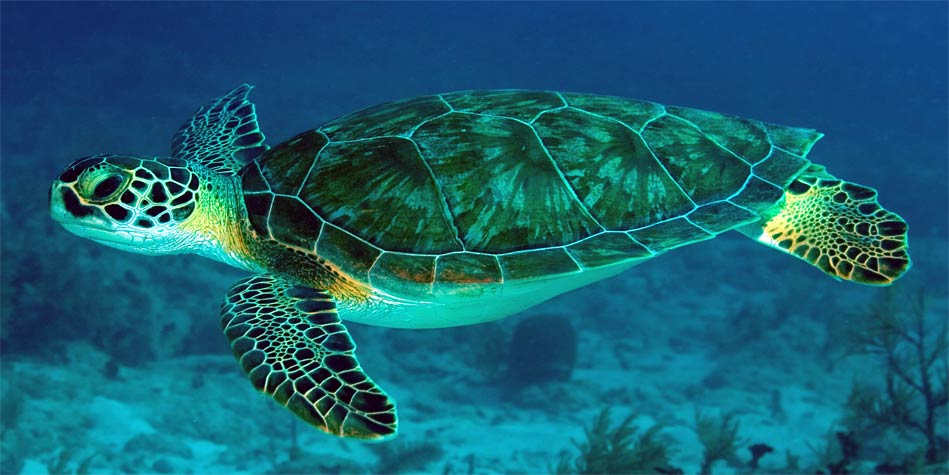
Types of Sea Turtles spotted across all the hatcheries in Sri Lanka are as follows –
1. Green Turtle – This is one of the most commonly found turtle species in Sri Lanka. They are so named because of the presence of the green fat tissues beneath their upper shell. While the younger ones are mostly carnivorous, the adult ones are herbivorous. Green turtles can grow up to a length of 1 meter and can weigh around 250 kilograms. Adult female green turtles are known to lay off around 120 to 140 eggs at a time. The best time to locate them is night as they usually wander around the shore in the darkness.
2. Loggerhead Turtle – This is a rare turtle species found in Sri Lanka and is usually identified by the length of their heads. The Loggerhead turtles typically appear red and brown in color and possess the ability to grow as long as 1 meter and weigh around 170 to 200 kg. These are primarily carnivorous as they make the best use of their muscular jaws for crushing both crustaceans and mollusks.
3. Hawksbill Turtle – This species of the Turtle of Sri Lanka is accounted to be rarest amongst the others and is often observed to reach the height of 90 cm. Their weights vary significantly between 50 to 70 kg and are identified by their bird-like-beak protruding from their narrow head. They make the best use of their beak for catching the animals hiding deep under the small crevices. These turtles are tagged as regular Sri Lanka visitors. Also, their shells are beautiful, with around 13 symmetrical vibrant pieces.
4. Leatherback Turtles – The Leatherback Turtles are the largest of all the critically endangered turtle species across the globe. They are accounted as one of the rarest finds in and around the soils of Sri Lanka. The identification of these leatherback turtles is made from their front flippers and its intricately carved shell reflecting black and white stripes.
It has got a thin, rubbery and tough carapace which imparts its characteristic leathery touch to these turtles. Besides, these turtles are known to possess a blood circulatory system, which reflects that of a cold-blooded reptile. This helps the marine animal to keep their body warm with the aid of the metabolic heat of their muscle activity. These animals can reach up to 3 meters in length and weigh around 750 kg.
Tips for Visiting Sea Turtle Hatchery
Here are some useful tips to reap out the maximum benefits out of your visit to the Sea Turtle Hatchery in Sri Lanka –
1. To know more about the sea turtles, participate in their turtle conservation tour. The Sea Turtle Hatchery of Sri Lanka avails an educational tour wherein all the visitors are accompanied by a professional guide to explore more about the Sea Turtles’ evolution and their hatching and conservation processes.
2. As a responsible visitor, make sure that you do not put the flashlights of your DSLR’s or cell phones on an ON mode as female sea turtles prefer to hatch in dark and silent zones.
3. Do not try to feed anything to any of this wildlife as it may make them susceptible to unexpected infections and diseases.
4. While visiting the hatchery, make sure that you do not litter your plastic bags in and around. This is the worst thing, as the sea turtles may confuse themselves with the fact that your carry bags are actually their source of food.
5. Maintain a reasonable distance from the nesting spots of these sea turtles.
6. Ensure that your visit to the Sea Turtle Hatchery does not leave any form of a carbon footprint (in the form of food waste or wrappers) behind; otherwise, any kind of climatic changes may transform their food sources, which might result in the ill-effects of its bioaccumulation.


